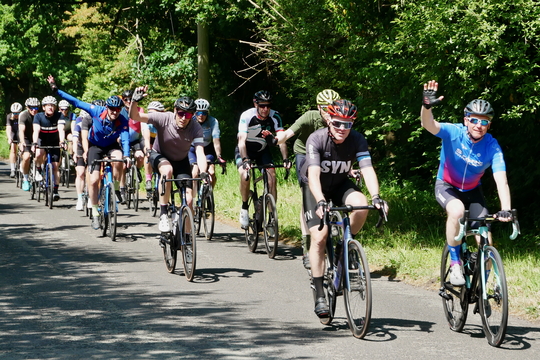Residential developer and investor Jaspar Group has seen its charitable work grow from a day centre in Harrow to supporting more than 130 initiatives across the world. Emily Wright discovers the benefits and challenges that arise when corporate philanthropy becomes far more than just a sideline.
There is plenty to be said for side hustles. Ideas, spin-offs and even whole business lines running alongside bread-and-butter work have been the source of many a success story. The problem, says Jaspar Group managing director Anup Pankhania, is when the concept is applied to matters that need full-time attention. And when it comes to social impact, he believes a side hustle just will not do. Certainly not if the goal is to make a significant, long-standing difference in the world.
And he should know. The Jaspar Foundation – the charitable arm of Jaspar Group, a family-run residential investor and developer set up by Pankhania’s father, Raj, in the 1970s – launched in 2009 and takes its approach to donations and grants as seriously as the work delivered by the core property business.
As a result, the Jaspar Foundation has committed to giving away £400,000 a year to good causes in the UK and overseas from 2023. This figure is set to increase to £1m a year within the next five years.
Here, Pankhania – along with Jaspar Foundation manager Neha Mehta and Jaspar Group planning director Lotte Hirst – reveals what those resources are and how they have been cultivated to grow the foundation from a day centre in Harrow to a registered charity supporting more than 130 initiatives across the world.
Community issues
Pankhania says the business has always been rooted in the ethos of karma, a concept taken very seriously by the company’s Hindu founder and directors. This was one of the reasons that Pankhania’s father felt compelled to address a local issue back in 2009.
Jaspar Group’s founder and chairman noticed that all the benches had been removed from the local shopping centres in and around Harrow. He had often seen elderly people gathering on these benches to catch up during the day and was concerned they would have nowhere to congregate following their removal.
“Initially, he covered the costs to hire out some space at Harrow Leisure Centre as a meeting place,” says Pankhania of his father. “But in 2013 he came to me and said he thought we needed to buy somewhere to create a day centre and that the building used by Harrow Magistrates’ Court had come up for sale.
“I thought it was a crazy plan initially and had no idea how we were going to run this centre and the business.”
In the early days, Pankhania’s wife joined the family business to run the centre. This worked well for six years. The building was converted into the Jaspar Centre, a club for the elderly community to meet, socialise and even take Zumba and yoga classes. When the opportunity came up to sell the centre to another charity for £3.3m in 2019, Pankhania recognised this would allow the group to support initiatives far beyond Harrow’s local community. He pledged to donate the proceeds of the sale to backing charities in the UK and overseas, and set about putting together a bigger team to oversee the foundation.
One of the key resources to which he attributes the foundation’s success, along with time, is people. “You need a dedicated team,” he says, convinced that if the foundation had been run informally as part of the core business it would not have grown so fast or achieved so much.
“We have a solid group of people behind the foundation monitoring the impact of each of our donations and meeting with charities. It would be good to see more developers doing what we have done, but not everyone has the time to create the infrastructure to make this sort of thing work. And you must be careful because if you take your eye off the business and stop looking after the work which is allowing you to give back in the first place, everything falls apart.”
Heading the foundation is Neha Mehta, who came on board two years ago as foundation manager to manage the growth of the charitable organisation.
Measuring impact
It is a big role, she says, and there are misconceptions around running a successful charity. The growth was the easy part. Following the sale of the Jaspar Centre, the foundation was able to formalise as a charity with a significant amount of capital behind it, expanding its reach almost instantly.
“Instead of only helping the elderly population in a specific area, we are now able to focus on five core sectors: education, health and wellbeing, elderly and disabled, homelessness and poverty, and emergency relief,” says Mehta.
The foundation has also set up a page on its website where charities and initiatives can apply for grants. Mehta says: “We support charities like LandAid, which is obviously linked to property, but we also support initiatives like the creation of playgrounds for disabled children, food and school uniform programmes, and causes which emerge off the back of a specific set of circumstances. As an example, we donated oxygen canisters in India at the height of the Covid-19 pandemic.”
Much harder to manage than the foundation’s growth has been measuring the impact these donations have in real terms. It is easy to lose track if due diligence is not applied at every stage of the process, says Mehta. Funds given, and indeed received, in good faith that subsequently disappear into initiatives without a measurable impact can quickly undermine any charitable enterprise.
“It is all very well giving donations,” she says. “But following them up with impact evaluation is crucial. You can’t just give blindly – there need to be processes in place guiding how the funds are given, how we assess the initiatives coming to us and how we follow up. It takes a lot of time and patience.”
She adds that drip-feeding donations is a core part of the foundation’s strategy – agreeing to a donation upfront with the caveat that impact can be demonstrated at various stages. The funds are then given out in phases rather than one lump sum.
“An initiative may have applied for a £10,000 grant, but we often apportion that accordingly based on what they have told us,” says Mehta. “There might be a breakdown and they will say ‘we need x amount for this project and y for this’, so they can work on those projects individually while we keep checking back in saying: ‘OK, we gave you this much over the past six months, how has that been used? What has been the impact? How have you improved people’s lives? What have you done?’ We ask for evidence in the form of photos, videos and other proof of how the funds have been used.”
Pankhania says such a high level of due diligence was not what he expected when the foundation launched. But without it, he adds, the social impact vehicle would not have the reputation it does today.
“When you start operating on the ground, you realise you really need to [measure impact] if you are going to be able to show your worth operating in the social impact sphere.”
Charity begins with homes
For Jaspar Group planning director Lotte Hirst, while the foundation is a separate entity to the core business, it remains intrinsically linked to the work of the property business. This, she says, is one of its great attributes.
“[The foundation] is self-sustaining, but it is also incredibly complementary to the development work we do,” she says. “We are focused on growing the business and progressing it as much as we can, but we also use the foundation to dovetail with the developments we are doing. We will go to a site, invest a lot in the area, build new homes and within the planning there will be the required contributions. But, above and beyond that, the foundation will look to become active locally, so it’s a two-pronged approach to the benefit in that local area.”
Hirst adds that this will not just involve a one-off donation. “It will be something like a three-year commitment to a certain number of charities in that local community,” she says. “The foundation will research the area to work out where there is a need.”
As an example, she says the developer is currently building 47 flats in Leatherhead, Surrey, with another 54 to come – “a lot of investment on the real estate side of things” – but the foundation has also become active in the area.
“We have found an amazing local food bank initiative and have made a three-year commitment to it,” says Hirst. “Ultimately, we want to make sure we are building homes and having a positive impact that way, but also offer something extra. Working with local charities in the areas we are developing is a good way to do that.”
Attracting talent
When it comes to returns for the business itself, beyond the satisfaction that comes from being able to support local communities, Pankhania says the foundation has become a major draw for a priceless resource – talent.
“It is amazing how many potential job candidates for roles at the group know more about the foundation than they do about the actual business,” he says. “It has a bearing on how people see us and on why people want to work with us. The work the foundation does shows we aren’t just a ruthless developer wanting to make as much profit as possible.”
In a world where people in the real estate sector are looking for more from their careers and want to make a difference, Pankhania says the power of the foundation has never been more potent.
“We want to take care of people less fortunate and transform lives,” he says. “When you see the sums we are giving out, hundreds of thousands of pounds every year, it’s easy to see that this is the real thing.”
To send feedback, e-mail newsdesk@eg.co.uk or tweet @EGPropertyNews











